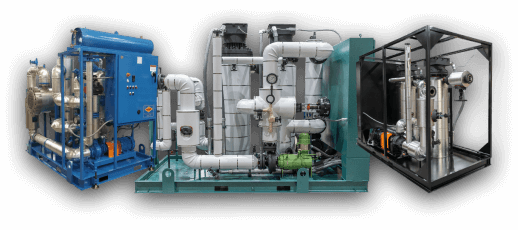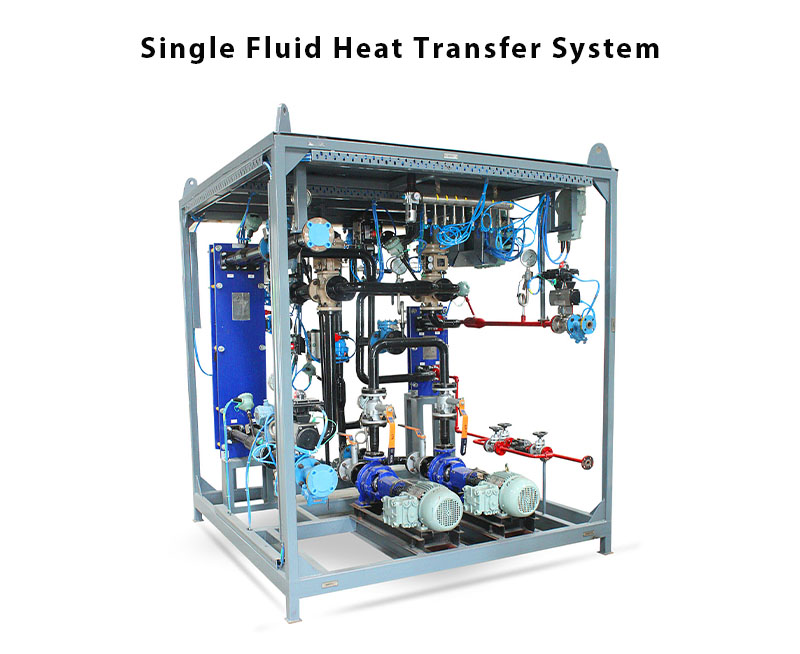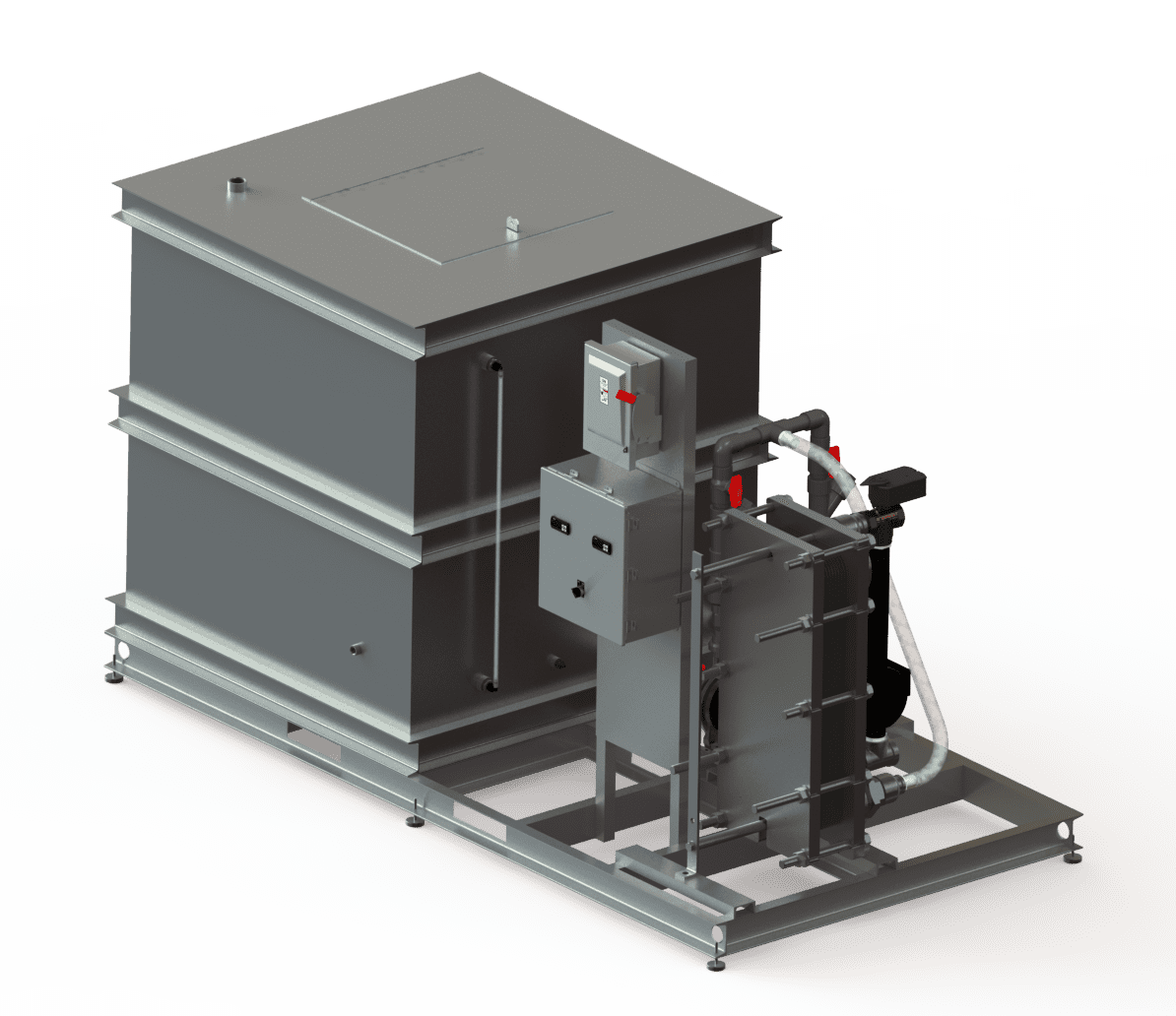Exploring the Potential of DVS Heat Transfer Systems in Next-Gen Thermal Management
The Duty of Heat Transfer Systems in Sustainable Power Solutions for the Future
Heat transfer systems are essential in the quest for lasting energy options. They maximize thermal power management, boosting the efficiency of sustainable modern technologies. By utilizing systems like radiation, convection, and transmission, these systems lessen power losses. Their function in solar thermal and geothermal applications is especially significant. As technologies emerge, the potential for further innovations increases essential inquiries concerning future energy methods. What advancements will shape the landscape of lasting power?
Recognizing Heat Transfer Solutions

The Value of Thermal Energy Monitoring
Effective thermal power management is necessary for maximizing energy efficiency and reducing waste in numerous systems. By controling temperature and maximizing Heat transfer processes, companies can markedly lower power intake and operational costs. Efficient monitoring involves the implementation of advanced innovations and methods that keep an eye on and manage thermal conditions within systems, ensuring that power resources are used efficiently. Furthermore, correct thermal energy administration contributes to lowering greenhouse gas exhausts, aligning with global sustainability goals. It additionally boosts system reliability and performance, resulting in improved item quality and longer equipment lifespan. Inevitably, focusing on thermal power monitoring is a vital step in the direction of developing a lot more lasting energy options and promoting a responsible technique to energy intake in household and industrial contexts.
Applications of Heat Transfer in Renewable Power
While different renewable energy sources promise sustainability, the effective application of Heat transfer plays an essential role in their performance. In wind energy systems, Heat transfer is used for wind turbine component air conditioning, enhancing efficiency and long life. Geothermal power relies on reliable Heat exchange between the earth's subsurface and the fluid distributing in the system, taking full advantage of power removal. Biomass power procedures also benefit from Heat transfer, as it assists in converting natural products into usable fuel through pyrolysis and gasification. Furthermore, in hydropower, keeping excellent temperature levels in reservoirs can enhance power result. Each of these applications shows the crucial value of Heat transfer systems in boosting eco-friendly power modern technologies, ultimately contributing to a much more lasting energy future.
Enhancing Solar Thermal Power Efficiency
As solar thermal power systems continue to evolve, improving their performance has actually come to be crucial for taking full advantage of energy output. Breakthroughs in Heat transfer technologies, such as improved thermal storage space materials and cutting-edge Heat exchangers, play a considerable function in boosting efficiency. By making use of advanced products that have superior thermal conductivity, systems can capture and transfer Heat better. Furthermore, integrating radar that adhere to the sun's path warranties that enthusiasts get perfect solar exposure throughout the day. Utilizing nanotechnology in solar absorbers can better increase energy absorption rates. Including automatic control systems aids handle and regulate temperature levels power distribution successfully, leading to minimized losses and enhanced general system efficiency. These enhancements pave the means for more sustainable solar thermal energy remedies in the future.
Geothermal Home Heating: A Lasting Remedy
Geothermal heating provides a practical option for sustainable power, using substantial ecological benefits via lowered greenhouse gas discharges. Its performance and cost-effectiveness make it an appealing alternative to typical heater. Obstacles related to execution should be resolved to maximize its possible influence.
Ecological Benefits of Geothermal
Traditional heating approaches contribute substantially to greenhouse gas discharges, geothermal home heating provides a compelling alternative that minimizes environmental impact. By taking advantage of the Earth's inner Heat, geothermal systems make use of a renewable resource resource, considerably decreasing reliance on fossil fuels. This approach creates very little carbon emissions, making it a cleaner choice for business and household home heating. Furthermore, geothermal systems promote energy performance, as they call for less energy compared to standard heating unit. DVS Heat Transfer Systems. The usage of geothermal power additionally assists in lowering air contamination, enhancing neighborhood air top quality and public wellness. As a lasting remedy, geothermal heating sustains climate adjustment mitigation efforts, placing itself as a vital element in the change in the direction of a greener future
Performance and Cost-Effectiveness
Exactly how does geothermal heating gauge up in terms of effectiveness and cost-effectiveness contrasted to conventional furnace? Geothermal heating shows superior performance, commonly attaining a coefficient of efficiency (POLICE) of 3 to 5, indicating it creates 3 to five systems of Heat for every single device of electrical energy eaten. This effectiveness converts into lower operating expense, especially in regions with stable geothermal sources. First installation expenses can be more than conventional systems; however, long-term financial savings on power costs and decreased upkeep expenses can offset these in advance investments. In addition, several federal governments incentivize geothermal systems via rebates and tax obligation credit scores, enhancing their cost-effectiveness. On the whole, geothermal heating emerges as a lasting and economically feasible alternative to more standard heating remedies.
Implementation Difficulties and Solutions
Various obstacles can hamper the extensive execution of geothermal heating unit, in spite of their clear advantages as a lasting power option. High initial installment prices often deter investors and property owners, making financing a considerable barrier. Additionally, the geographical limitations of appropriate geothermal sites limit ease of access in certain regions. Local policies and allowing processes can also complicate task development, leading to hold-ups. Public understanding and understanding of geothermal systems remain low, hindering acceptance. To deal with these difficulties, targeted education and learning campaigns can boost public knowledge, while government motivations could ease monetary worries. Teaming up with neighborhood authorities to streamline policies may promote smoother task authorizations, eventually advertising the continue reading this adoption of geothermal heating as a practical, sustainable energy alternative.
Developments in Heat Transfer Technologies
Advancements in Heat transfer innovations play an essential duty in boosting energy efficiency and sustainability. Advanced Heat exchangers and stage adjustment materials go to the forefront of these developments, offering significant improvements in thermal administration. These innovations not only maximize power usage however likewise contribute to reducing environmental effect in different applications.
Advanced Heat Exchangers
Advanced Heat exchangers play a necessary role in enhancing energy performance throughout different applications in sustainable energy remedies. These devices help with the transfer of Heat in between 2 or even more liquids, substantially reducing energy intake in processes such as industrial heating, cooling, and power generation. Innovations in materials and layout, such as using nanofluids and compact configurations, have actually brought about enhanced thermal performance and decreased dimension needs. Additionally, developments in electronic tracking and control systems enable enhanced procedure, more increasing effectiveness. By lessening waste Heat and making best use of power recovery, progressed Heat exchangers add to decrease carbon footprints and support the shift toward eco friendly modern technologies. Their proceeded advancement is essential for achieving worldwide energy sustainability goals.
Phase Modification Products
The combination of phase adjustment materials (PCMs) into Heat transfer innovations represents a considerable innovation in energy monitoring and performance. PCMs absorb and launch thermal power throughout their stage adjustments, making it possible for efficient temperature level law in building products and energy systems. By keeping excess Heat during height durations and launching it when need rises, PCMs add to fill changing and power preservation - DVS Heat Transfer Systems. This capability boosts the performance of eco-friendly energy systems, especially in solar thermal applications. In addition, PCMs can boost the thermal comfort of interior settings, lowering reliance on traditional home heating and cooling approaches. As innovations in PCM formulations proceed to arise, their role in sustainable power options is poised to expand, supplying encouraging opportunities for future research study and application

Future Prospects for Heat Transfer in Sustainable Power
As the demand for lasting power remedies proceeds to increase, the function of Heat transfer systems is becoming increasingly crucial fit future innovations. Developments in styles and products are anticipated to improve effectiveness in Heat transfer, reducing energy losses in different applications. The integration of innovative thermal storage space systems, such as you can check here stage change products and thermochemical storage, will certainly allow far better management of power resources. Research into nanofluids and biomimetic Heat exchangers may better maximize thermal efficiency. The adoption of wise innovations will permit for real-time tracking and flexible control of Heat transfer procedures. These advancements are positioned to considerably add to the general performance and sustainability of energy systems, leading the means for a more energy-efficient future.
Regularly Asked Questions
How Can People Apply Heat Transfer Solution in your home?

Individuals can implement Heat transfer systems in the house by installing energy-efficient appliances, using radiant heat, and enhancing insulation. These actions improve power efficiency, minimize prices, and promote sustainable practices in residential environments.

What Are the Prices Linked With Mounting Heat Transfer Systems?
The costs connected with setting up Heat transfer systems differ commonly, normally incorporating tools, installation labor, and upkeep. Factors such as system type, home size, and neighborhood regulations from this source greatly affect the general expense involved.
Are There Federal Government Rewards for Heat Transfer System Installations?
Federal government incentives for Heat transfer system installments vary by region and can include tax obligation gives, credits, and refunds. These monetary benefits intend to encourage fostering, inevitably advertising energy efficiency and reducing ecological impact within neighborhoods.
How Do Heat Transfer Equipments Impact Energy Expenses?
Heat transfer systems especially influence power expenses by enhancing power efficiency. By improving the transfer of Heat, these systems reduce energy usage, causing lower energy prices and producing a much more sustainable strategy to power management.
What Maintenance Is Needed for Heat Transfer Systems?
Upkeep for Heat transfer systems includes regular evaluations, cleaning of elements, checking fluid degrees, making certain correct insulation, and changing worn parts. These jobs help preserve effectiveness, prevent breakdowns, and lengthen the system's operational lifespan.
These systems help with the activity of thermal energy from one medium to an additional, enabling the transfer of Heat for home heating, air conditioning, or energy generation purposes. Geothermal energy counts on efficient Heat exchange between the planet's subsurface and the fluid distributing in the system, maximizing energy removal. In addition, geothermal systems advertise power effectiveness, as they call for much less energy compared to standard heating systems. Advanced Heat exchangers play a vital function in boosting power performance across various applications in sustainable power services. Heat transfer systems significantly affect energy expenses by optimizing energy effectiveness.